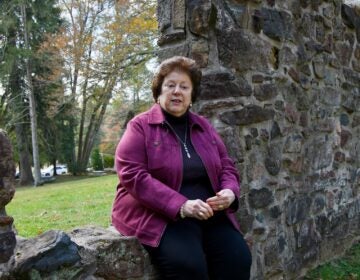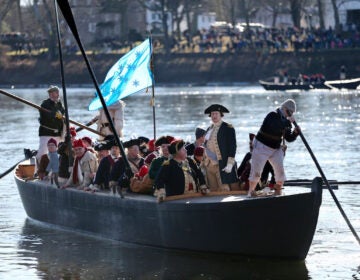Hessian remains from American Revolution unearthed at Gloucester County battlefield
On the last day of a public dig for artifacts, researchers from Rowan University discovered a mass Revolutionary War grave site for Hessian soldiers.
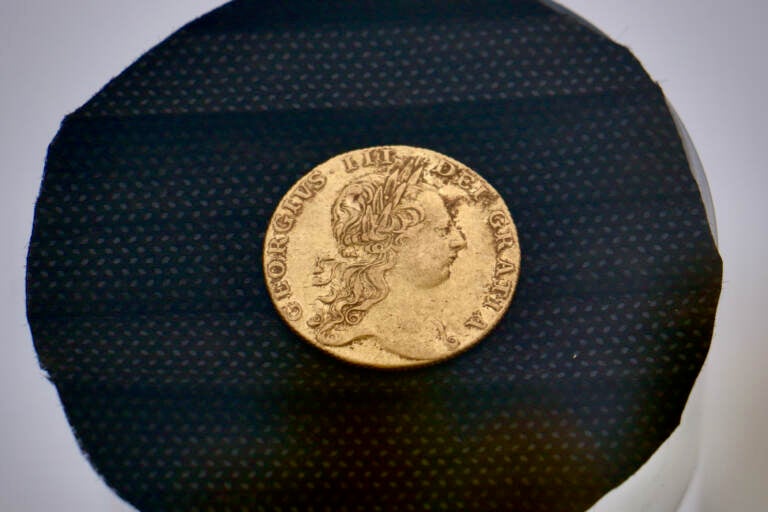
A rare 1776 British gold guinea was discovered on June 18 at the Red Bank Battlefield archaeological site. The remains of 13 men believed to be Hessian soldiers were also discovere there. (Emma Lee/WHYY)
From Princeton to Cape May, what do you wonder about South Jersey, its people, and its culture that you want WHYY to investigate? Let us know here.
They weren’t supposed to be there. That’s according to all of the public records that were available and the surveying done by archaeologist Wade Catts.
“They had been buried down by the little house and had washed into the Delaware River by the middle of the 19th century,” he said.
Then on June 26, 2022, at approximately 2 p.m., a discovery was made of a mass Revolutionary War battlefield grave in recently purchased land at Red Bank Battlefield Park in Gloucester County.
“I was here at the park for a historical baseball event,” explained County Commissioner Jim Jefferson. “We were playing an old time game of baseball on the other side of the park.”
“Everybody comes over to me, ‘Jim, Jim, we need your help. We found a femur,’” Jefferson recalled. “I’m like, what in the world?”
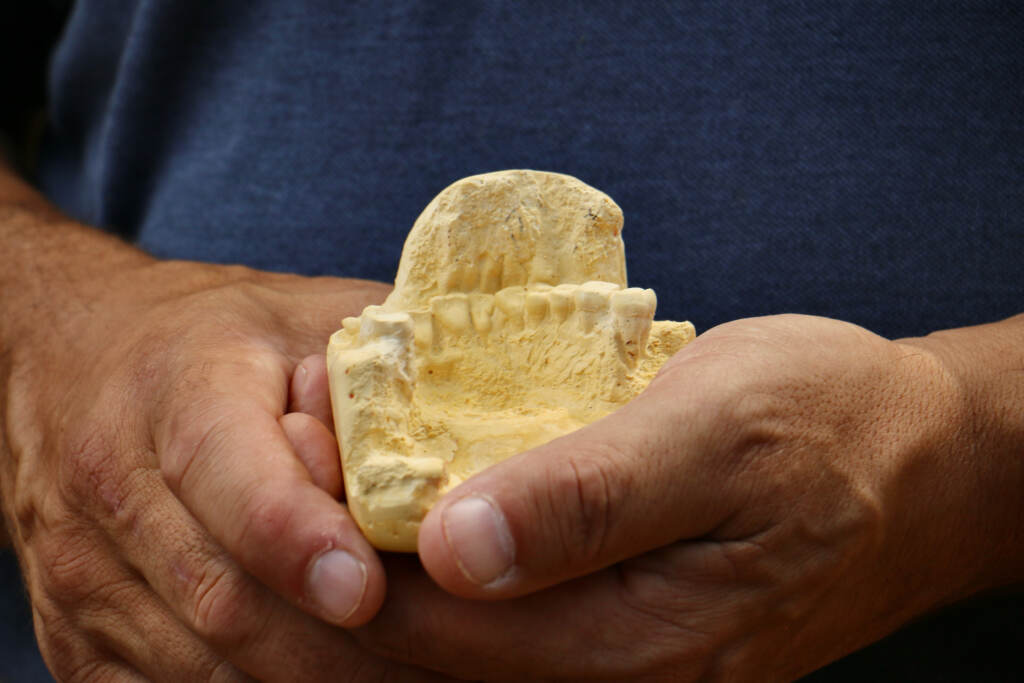
Researchers at Rowan University announced Tuesday the discovery of remains belonging to 13 soldiers, believed to be Hessian.
Hessians are from the German state of Hesse-Cassel, located in modern day Germany. Approximately 30,000 of them were hired by the British to help them fight the American Revolution.
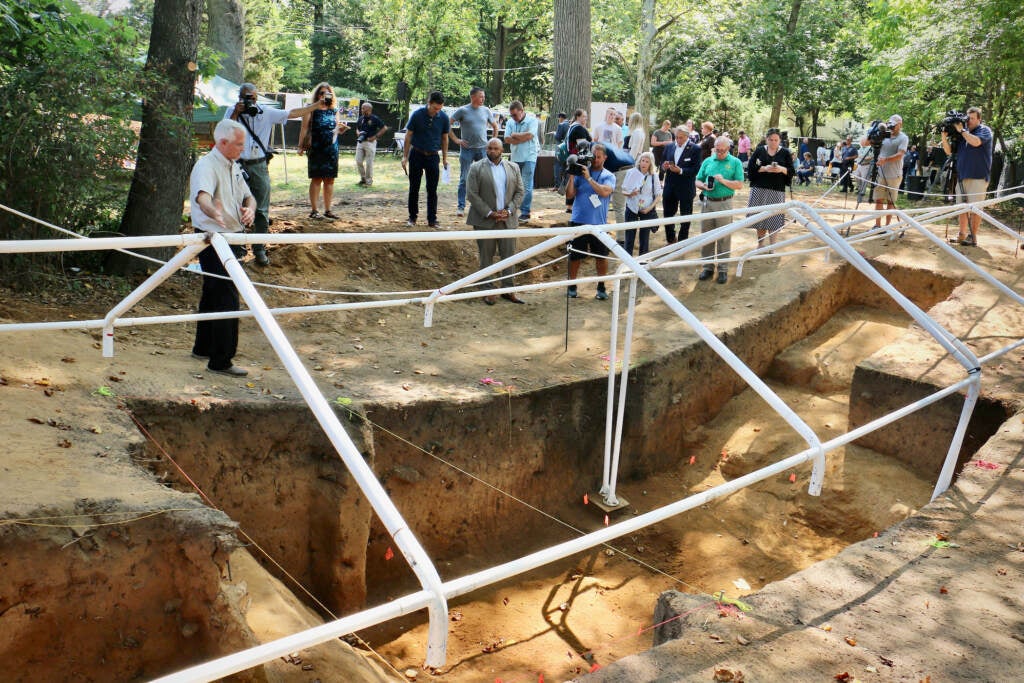
The remains were discovered in land purchased by Gloucester County in 2020, that was adjacent to the park’s northern boundary. The site contained part of a trench at Fort Mercer that was used by American soldiers in 1777.
The park is the site of the Battle of Red Bank, which took place on Oct. 22, 1777, resulting in the casualties of approximately 377 Hessians and 14 Americans. Historians have said the battle was a big boost for Americans during the fight for independence.
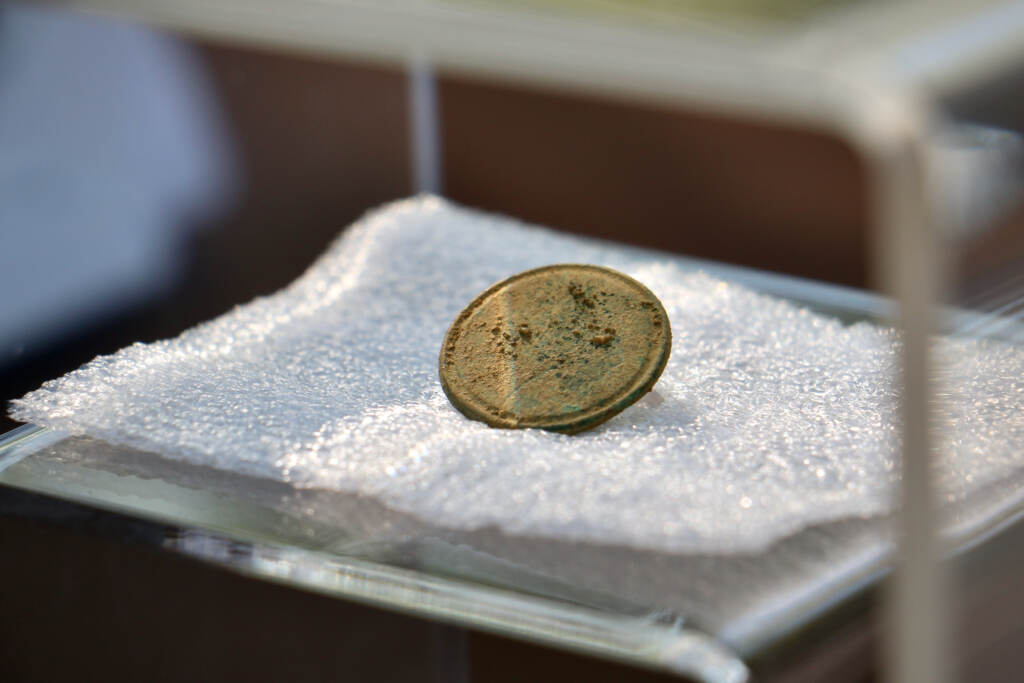
Finding the remains was “100% unexpected,” according to Dr. Jennifer Janofsky, a history professor at Rowan and the director of Red Bank Battlefield Park. She said teams “worked respectfully, patiently and methodically to document and remove” the remains from the site.
“They worked through the hottest days of the summer, through weekends, with communications going long into the night and beginning as early as 6 a.m. almost every day,” she said, adding “Everyone involved appreciated the gravity of the task.”
The remains are at the New Jersey State Police forensic lab, where study and analysis will take place.
Among those who will assist in the studies is Dr. Stuart Alexander, a dentist and fellow at the American Academy of Forensic Science. Using a cast model on display, he explained what likely happened to one soldier.
“We…have a tooth right here that looks like [it] broke around the time of death,” Alexander said. “The reason we feel that way is because the stem or root of the tooth is snapped. It’s not degraded. It just snapped.”
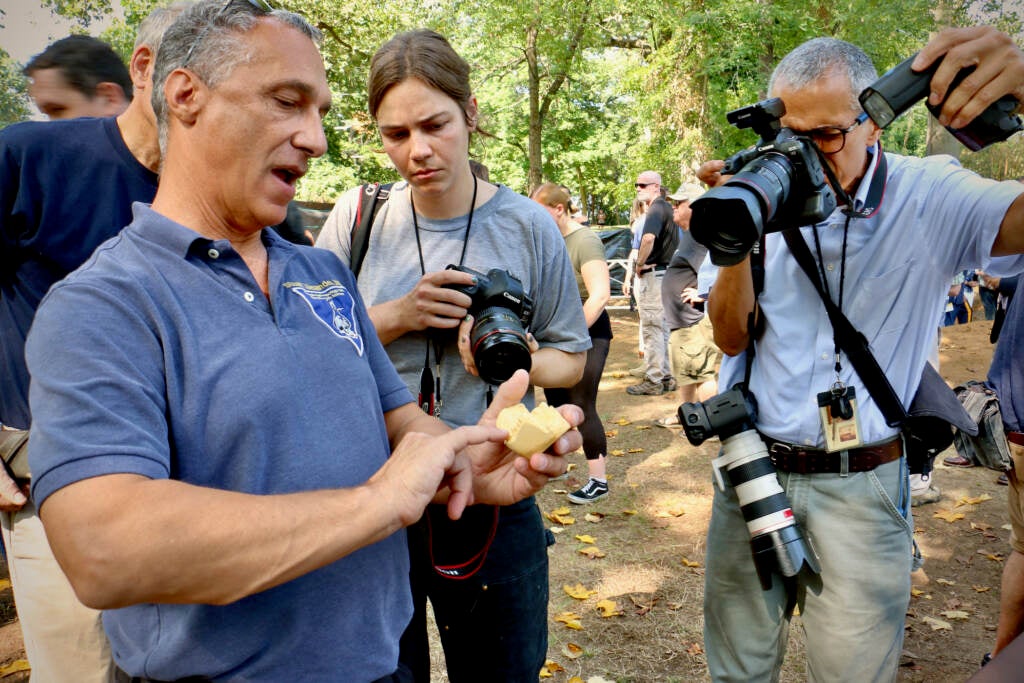
Alexander further explained that the snapped tooth is an indication of a “traumatic injury” around the time of death.
“This person probably fell downward, hit their face, rolled over [and the] tooth was in their lip,”
Once complete, the remains will be reinterred at a site to be determined.
Janofsky said Catts, who is president and principal of South River Heritage Consulting, and herself will work together to develop a phased plan for more archaeological study. She adds that she hopes to share the stories of the war dead to better contextualize “the pain, the loss and the absolute horror of war.”
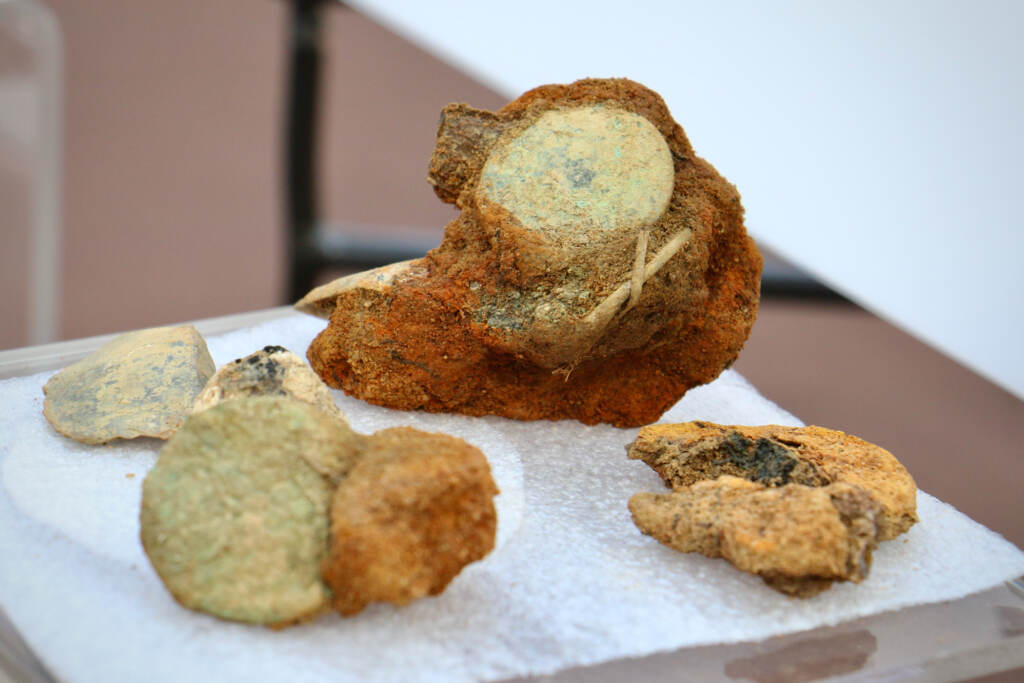
While most of the attention was on the discovery of the remains, other artifacts from the battle were discovered, including five impacted musket balls, a knee buckle from a uniform and a rare 1766 King George III gold guinea coin that is the equivalent of a soldier’s wage for a month.
“The guinea was worth 242 pennies or more than a month’s wage for the common infantrymen,” Catts said, “that suggests that coin was probably carried by an officer and not a common soldier.”
WHYY is your source for fact-based, in-depth journalism and information. As a nonprofit organization, we rely on financial support from readers like you. Please give today.





